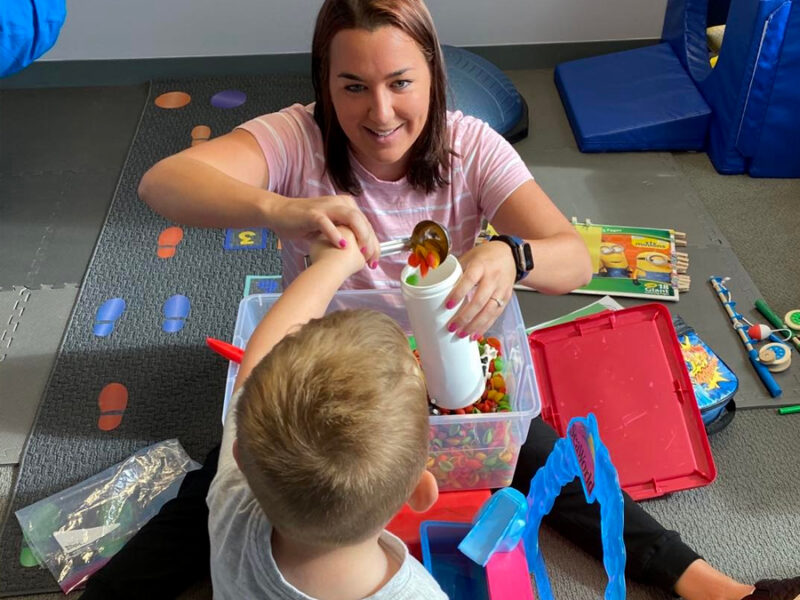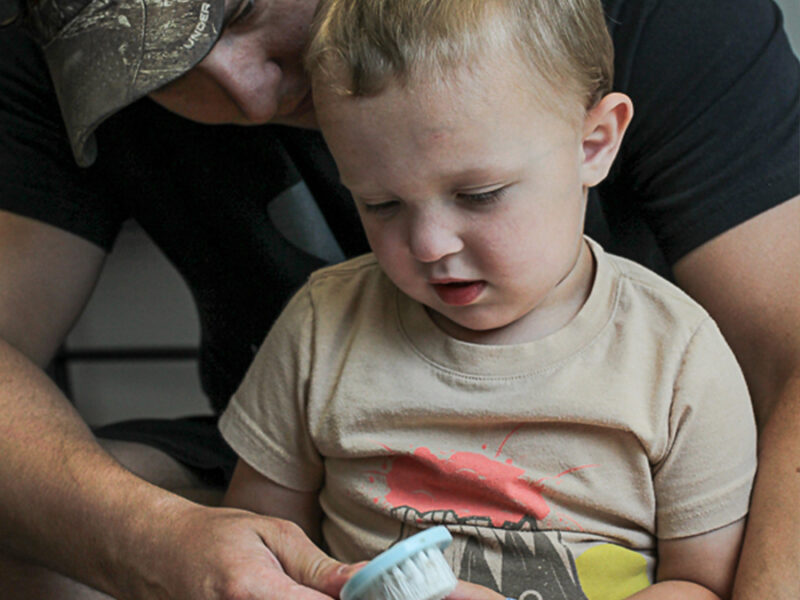Caregiver involvement is very important in regards to the growth of a child’s speech-language skills and is essential to a child’s progress. To optimize growth and progress, caregiver involvement is crucial in a child’s treatment plan and weekly therapy sessions.
Who is a caregiver? A caregiver is a person who is involved in a child’s life and helps them with activities of daily living. A caregiver may be the child’s mother, father, grandfather, grandmother, babysitter, aunt, uncle, older sibling, etc.
Questions often arise about whether it is okay if a certain person brings their child to therapy sessions. The answer is whatever works best for you and your family. It is important that children have reliable and consistent transportation to attend weekly therapy sessions. We understand how each family has unique needs and busy schedules. SLPs understand the importance of caregiver involvement.
According to an article from the American Speech-Language-Hearing Association (ASHA), some ways to involve caregivers are:
- Involve caregivers in therapy sessions
- The amount of time is different for each child and family based on various factors. For some families, it is hard for caregivers to be actively involved in sessions due to caring or attending to other children during sessions.
- Caregivers may be present during the entire session with training/education throughout the session.
- Some caregivers may prefer to be involved in the beginning and/or end of the session.
- Sometimes it is best to discuss goal targets and session progress at the end of the session with caregiver(s) and provide home program activities for additional practice.
- The decision of caregiver involvement is based on clinician and caregiver preferences and input.
- Start or end sessions with open communication
- How did the home program activity go? How is school or daycare going? How is child doing with new baby?
- Ask if they have noticed anything new at home (e.g., new sounds, words, signs, play skills, etc.)
- Ask if there any changes or events coming up (e.g., doctor appointments, vacations, new babysitter, etc.)
- Ask caregivers for ideas of books, toys, activities the child enjoys or prefers
- This can help with transitions to and from the therapy room
- These preferred activities and toys can be used as motivators throughout the session
- Ask caregivers when they have time at home for communication opportunities/activities
- Knowing what time works best for a family is helpful when providing home program activities
- For instance, some families will practice speech activities during bath time, meal time, mornings, etc.
- Some families may want ideas when doing daily activities, such as brushing teeth or going for a walk
- Involve the whole family
- Encourage caregivers to let older siblings be apart of the session. Siblings can be great models and can help facilitate language at home
- Turn-taking can be targeted with siblings during structured play activities
According to another article from the American Speech-Language-Hearing Association (ASHA), several research studies have shown that the caregiver and family system has a significant impact on a child’s progress. We understand that caregivers play many roles, such as communication partners, interpreters, advocates, models at home, and so much more. It truly is important to involve caregivers before, during, or after therapy sessions to ensure progress and carryover at home.
Resources
https://leader.pubs.asha.org/doi/10.1044/leader.miw.20072015.30
https://leader.pubs.asha.org/do/10.1044/5-ways-to-involve-parents-more-in-their-kids-treatment/full/



